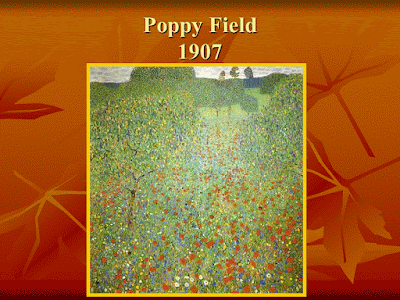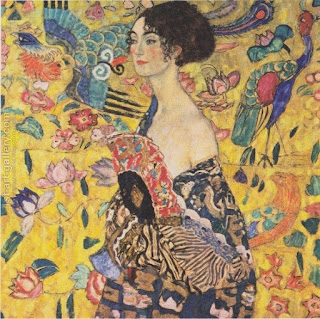Templeton Elementary School Art
Literacy
Program
Beatrix Potter Bio Presentation
(Note: as exhibits, show the kids the portrait of
Beatrix Potter, the mushrooms on the back, and put the large page of characters
on the docucam so they can see all of them.)
Beatrix Potter was an English author and illustrator
who wrote 30 books, most of them children’s books about animal characters. If you have ever seen Peter Rabbit, Jemima
Puddle Duck or Squirrel Nutkin, you have seen her work.
Beatrix Potter lived from 1866 to 1943. She grew up in a wealthy family, with a
governess, so she didn’t play with other children much. Her family loved the outdoors, travelling
often to Scotland and the beautiful Lakes District in England, and she loved to
observe nature. Landscapes, plants and
animals all became the subjects of her study and her artwork.
Beatrix was very intelligent, and interested in
almost all types of natural science. She
was also very talented at watercolor painting, and some of her first nature
studies were done about different kinds of fungus and mushrooms. She wrote books about them and was known as
an expert.
Beatrix Potter was also very interested in fairy
tales and fantasy stories. She began to
make her own illustrations, often using her own pet rabbits and mice as
subjects. Her ability to combine very
detailed and naturalistic pictures of animals with fantasy elements, like
clothes and tiny houses, made her a perfect children’s book author and
illustrator.
During visits to the Lake District, Beatrix Potter
wrote charming illustrated story letters to children of her friends. In her thirties, Beatrix Potter published the
Tale of Peter Rabbit on her own, and it was so successful that she began
writing children’s books full time.
When Beatrix Potter made money from her books, she bought
herself a farm in the Lake District of England, where she bred prize winning
sheep and farmed even as she continued to write and illustrate books. As she could afford to, she bought up as many
surrounding farms as she could just so the land would be preserved and no one
would ever build on it. When she died,
her land was donated to the British National Trust, and made into a national
park so everyone could come and see it.
Beatrix Potter, 1866 to 1943
Peter Rabbit
Jemima Puddle Duck
Pigling
Bland
Squirrel Nutkin
Mr.
Tod Fox
Mouse from Tailor of
Gloucester
Town Mouse
Mushroom
Illustration
Beatrix Potter Watercolor Pencil
Project
Getting
ready
Presenters, first
thing, please sign onto the Art Lit cart sign-out sheet on the wall. That way we know where the art carts are at
any time. Presenters should only be
coming in at a time they have officially signed up for. Next, please check the Art Lit cart for the
supplies you will need. The presentation
folders and the tools should all be kept on the carts. You will need to take paper and paper towels
from the counter, unless the person before you put them on the cart. You will
need to fill up two jugs with water if you are going to a portable classroom
where there is no water. These are the
supplies you will need:
On the cart:
Presentation folder and art samples
Desk protector sheets (30)
Sets of watercolor pencils (28 bags)
Bag of animal stencils (18)
Paint brushes in container (28)
empty water jars
2 jugs for water (fill them if
needed)
Bag of pencils and pencil sharpener
Take from the counter:
1 Bag of 28 little paper towels
1 stack of 28 sheets of white paper
1 drying rack with a garbage bag to
cover it if it is rainy.
(If dry art is on already on the rack,
please put it into a folder)
Take a
moment to look at the bags of watercolor pencils. Make sure none of them have broken points and
sharpen whatever needs sharpening before handing them out to the kids. It will save time later.
In the
classroom, set up the kids’ places for them.
Each student starts out with a desk protector, a sheet of white paper, a
pencil, a little paper towel, and a box of watercolor pencils. Each table group gets a page of Beatrix
Potter character pictures in a clear sleeve to share. (There are 6.) You can decide how to distribute the
stencils. Kids will have to share and
take turns for the one they want to use, but drawing around the stencil only
takes a moment.
You should
wait to hand out the brushes and water jars until most of the kids are done
drawing with the colored pencils. They
don’t work well on wet paper, so the kids should draw first, then brush the
water after.
The
Project
(Things
you might want to say to the kids are in purple.) Try to think of questions to ask the kids as you go
along. Present the artist to the kids
and show her work. Then show them the
samples of our project. Put the Large
Beatrix Potter prints and the project samples where the kids can see them. Put the large page of animals on the
docucam. Have the kids start by writing
their names AND their teacher’s name in pencil on the back of their paper.
Introduction
Today
we are going to make pictures of Beatrix Potter’s animal characters. We will use stencils to draw an outline of
the animals, and then draw the rest of the picture by hand. If you want to draw a picture freehand
without a stencil that’s great. If you
want to draw your own animal character different from these, that’s great
too. You will be the illustrator. We will color the characters in with
watercolor pencils, and after we finish our drawings, we’ll go over them with
wet paintbrushes to blend the color and make it look like watercolor paint.
One
important thing about this project – the watercolor pencils don’t work well on
wet paper. So we will do the pencil coloring first, and
then move on to the paintbrush and water.
Step 1: Choose
what character to use, or make one up
We
need to start with regular pencils first to draw the characters and the
backgrounds. Choose which stencil you
want to use if you are using a stencil.
You’ll need to take turns. Be
careful with the stencils – they have to last through lots and lots of kids
using them. Hold it down and be careful
not to move it while you draw around it.
Step 2: Think
about what your charter is doing, and where it is.
Next
you need to draw a little bit of background for your character. Think like an illustrator. Your picture will tell a little piece of a
story about the character. Think about
where he is, what he is doing, what objects might be next to him. Sketch a background in with regular pencil to
tell the story about the character.
Step 3: Color it in
Next
you will use the watercolor pencils to color the picture. Try to show the animal’s texture with the
marks you make. Feathers and fur have
different textures.
Step
4: Use a wet paintbrush to blend the
color
Hand out
water jars with not too much water in them to groups of kids, and hand out paintbrushes.
To
use the brushes, get them wet and shake them off in the jar so you don’t get
your papers too wet. You can use the
paper towel to dab extra water off of your brush. When you go over your drawings with the water
and brushes, try to do one color at a time and wash the brush off in the water
in between. You don’t want to smear all
the colors together too much.
You
don’t need to get the while paper wet – just the colors you drew. If you have too much water on your paper, you
can dab the paper with the paper towel too.
Afterwards
/ Clean up
Please make
sure to collect all the tools before you leave the room (place mats, bags of
watercolor pencils, paint brushes and pencils), and ask kids to look for
missing items. Please count the bags of
watercolor pencils and make sure the sets have not gotten put into random bags. If
you are in a portable, dump out water jars outside the door.
Please save
un-used sheets of white paper and paper towel for use later. Put them into the box in the library. Put the wet pictures in the drying rack and
cover it with the large trash bag to keep it dry on the way back to the library
if the weather is wet. Leave wet items
on the rack in the library. The next
person to use the rack can take them off and put them into a manila folder.
Please wash
the brushes in the sink and leave them upright in the plastic container on the
cart.
If any of
the stencils are damaged, please put them in the extra paper box and leave me a
note. Even email me if it needs to be
replaced right away. I hope the stencils
will hold up.
Thank you!
November 2018





















































